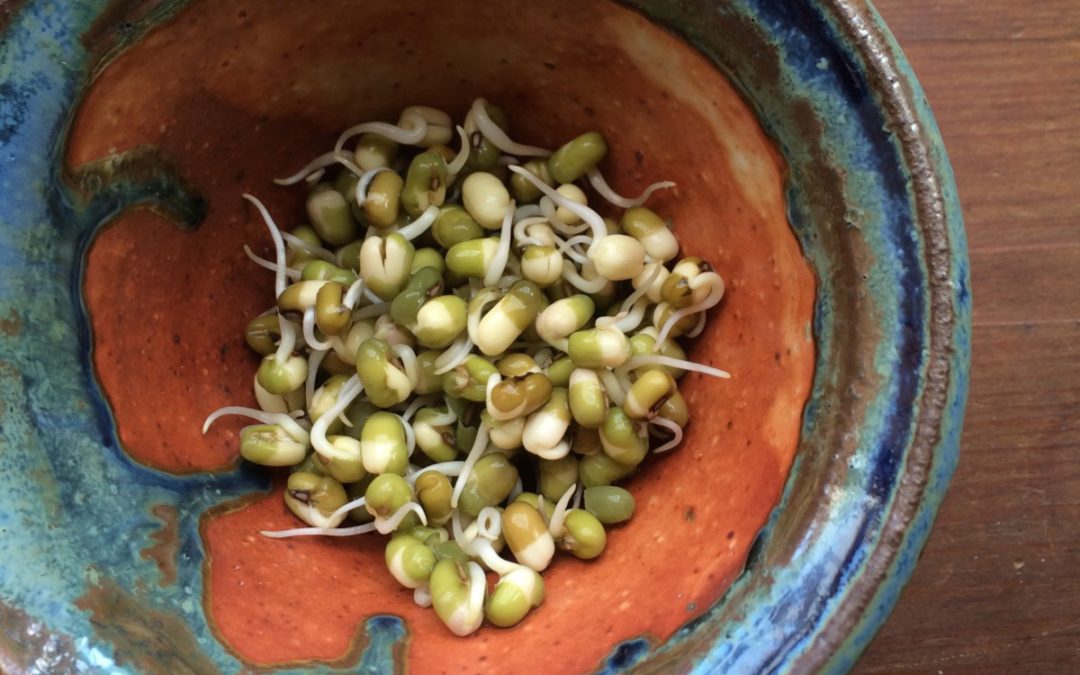Just the other day, my five-year-old found the dried beans in jars in the pantry, and begged me to make sprouts. What’s a mom to do?!
We started mung bean, adzuki bean, and clover sprouts, and I realized that there is no better time to make sprouts than the spring season, as our metabolism is emerging from its winter dormancy. Spring is an ideal time to clean out the cobwebs in our body by cleaning up our diet, and adding lots of fresh foods like sprouts to our diets.
Shown are my mung bean sprouts, and they contain bioavailable vitamins A, C, and E which are important antioxidants to help keep our cells healthy, along with iron and potassium, and 20% protein. The adzuki beans also have niacin (B3) and calcium, along with all the essential amino acids and 25% protein! Clover sprouts also have vitamins A, Bs, C, and E and 30% protein, along with the minerals calcium, magnesium, potassium, iron, and zinc. Each of these minerals is important for maintaining the adequate function of our cellular enzymes that keep our DNA healthy and help support our energy and moods.
With all these benefits, I want to make sure you know how to make sprouts! It’s really very easy, and they are a tasty addition to salads, sandwiches, and stir-frys.

I make my sprouts in a pint sized Mason jar, and I replace the cap portion of the lid assembly with a piece of stainless steel window screen cut into the right size. You can also use these pre-made stainless-steel screen lids, available here, or these plastic lids.
How to Make Sprouts
- Pour a few tablespoons of your favorite food to sprout: try mung beans, adzuki beans, lentils, or peas; grain; clover or alfalfa; sunflower seeds; broccoli seeds and radish seeds, etc. Radish and broccoli sprouts are especially rich in sulfurophanes, which are potent cancer-fighting nutrients.
- Fill the jar with water, and soak seeds until they swell and begin to crack their shells. The time varies with the size of the seeds, usually 12-24 hours.
- Once they crack, pour out the water, and rinse the seeds well and drain.
- Lay the jar sideways on a windowsill or kitchen counter where it will get at least a little indirect sunlight.
- Rinse 2 times per day, and replace jar sideways.
- Continue with this step until the sprouts are the length you like. For mung beans, 2-3 days is sufficient.
- Rinse thoroughly, and drain well. Then, replace the screen insert or plastic lid with a normal Mason jar cap and store in the refrigerator.
For a very thorough discussion and specific instructions on how to make all the different kinds of sprouts, check out Sprout People. You can usually find many seeds to sprout in the bulk section of your local health food store (make sure to buy organic), or you could click here to order a sampler pack of organic sprouting seeds.

Thanks for the spring inspiration!